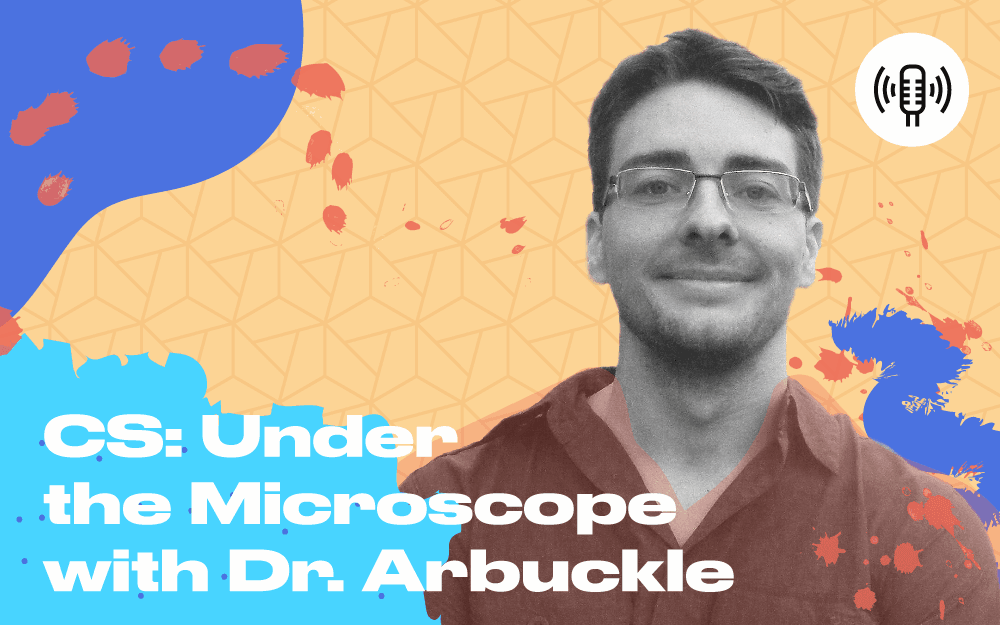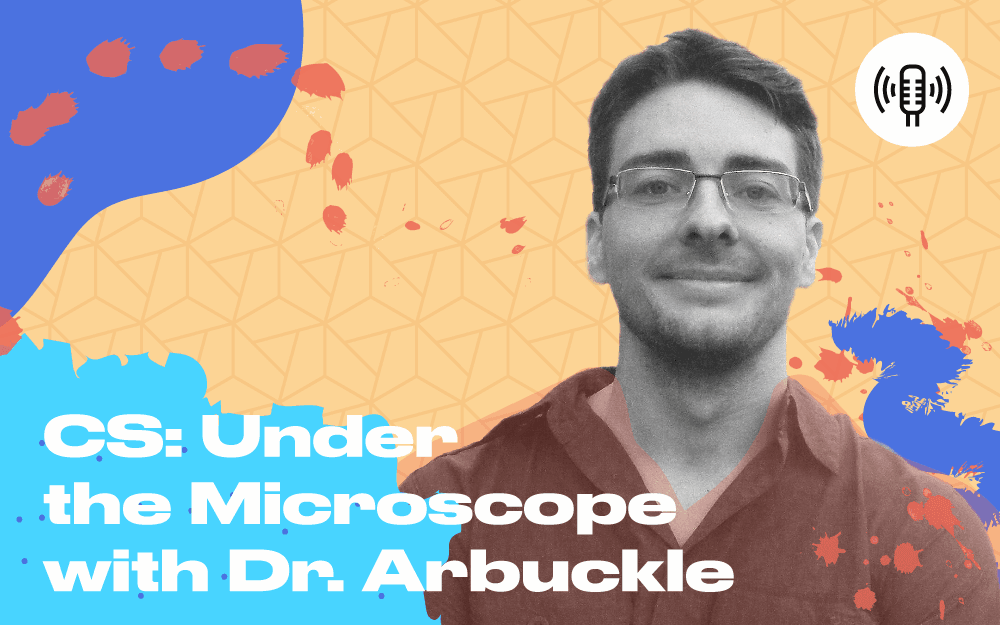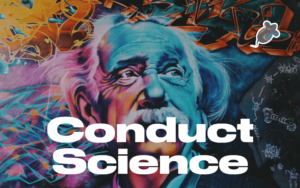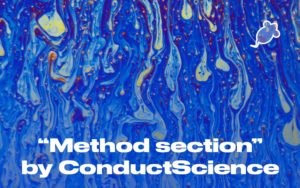
Under the Microscope with Dr. Jeffrey Krichmar
For years scientists have struggled how to find a way to model and study the brain, something that we do very much rely on but

The study of evolutionary biology is not one that makes the spotlight very often, unless through the window of human evolution. Today, Tom and Dr. Kevin Arbuckle discuss what it means to be an evolutionary biologist and the many uses and importance it holds.
Evolutionary biology mainly uses phylogenetic trees or evolutionary trees to map out the evolutionary history of animals and their traits. These tree’s come in many different shapes, forms, and sizes: from deep-time phylogenetic trees which look over the span of millennia to early-burst models that predict rapid diversification and speciation events when new ecological niches are exploited. It can often be difficult to know if you have the right tree and as Dr. Arbuckle says in the interview “Well, you don’t absolutely!”. Phylogenetic trees, much like other areas of science are contained hypothesize use to find the most likely relations. This can be done by simply following the shortest route or even by calculating the certainty or uncertainty of each split in the tree.
More than just seeing which animals are more closely related or which traits come from what lineage evolutionary biology has many less conspicuous importances. It can be used to identify which families of plants or compounds may contain useful drugs and medicine or it has even been used to correctly predict the presence of a previously undiscovered human species. Listen to the podcast to find out all about this and more!
You can listen to Under the Microscope by using the player above, searching for “The Conduct Science Podcast” on any place you listen to your podcasts, using any of the links below or you can download this episode HERE! You can also read the transcription down below.
If you would like to find out more about Dr. Arbuckle and his work, follow these links:

Today’s Guest:
Tom talks to Dr. Kevin Arbuckle an evolutionary biologist and lecturer at Swansea University. Dr. Arbuckle was fascinated by biology from an early age, as he grew up he got more attracted to the study of evolution. He took his undergraduate and master’s degree in zoology before shifting his attention to evolution with his PhD. Focusing on the aspects of evolution that influence biodiversity Dr. Arbuckle finds himself at the forefront of toxic weaponry research, such as venoms and poisons. Figuring out how these factors influence and affect diversification and biodiversity over evolutionary time scales.
Today Tom is Under the Microscope with Dr. Kevin Arbuckle an evolutionary biologist and lecturer at Swansea University. Have you ever wondered how we classify organisms, how we can use the genes of organisms to estimate the states of their ancestors, and the applications that have for today’s world? Like predicting the existence of new human species for them only to be discovered shortly after! Music by: Joakim Karud – https://soundcloud.com/joakimkarud.
Feel free to share your thoughts on our Twitter here: @Conduct_Science
Use #ConductScience on twitter to:
Learn about our products:
Tom: Hello, ladies and gentleman and welcome. I am your host Tom Jenks and today I am under the microscope with Dr KevinArbuckle. He Is an evolutionary biologist and lecturer at Swansea University, which is where I met him. He taught me on my course when I was there and when I was researching for the evolution episode that came out two weeks ago. By the time this comes out, I just remember being so interested and so fascinated by the work and the type of work that he was doing with adaptive radiation, poisonous animals, venomous animals, and just the way that they study evolution. It was absolutely fascinating to me. With that, though, I am aware that I ramble quite a lot during these introductions, so I’m going to take this one no further. Without further ado, take it away.
Tom: Hello Ladies and gentlemen, I am your host Tom Jenks and today I am under the microscope with Dr Kevin Arbuckle, an evolutionary biologist and lecturer at Swansea University. Once again, thank you for joining me today, Kevin.
Kevin: Hi. Yep.
Tom: So to start, why don’t you just tell us a bit about your background, your interested areas of studying, how you ended up in evolutionary biology?
Kevin: Um, that’s a good question. Almost semi by accident really. So I was one of those very strange children that spent most of my childhood climbing up trees and looking on the rocks and seeing what I could find and seeing what I could keep that can inherent interest in animals that I’m sure is in pretty much everyone is beaten out of people by the time they are about 3, kinda just stuck with me. Um, so I generally kinda realized that I wanted to go into evolution. Uh, well go into biology generally. That started off with dinosaurs. When I was a kid and then realized I don’t do bones or uh, morphology, um, and my interest and kind of weird and wonderful animals such as spiders, scorpions, snakes, lizards, et cetera. Um, was a main driver of that. Um, as I can, uh, was reading more about those areas very quickly came to pass the evolution was the area that I found most interesting and especially, um, evolution and behavioral ecology as well. So essentially what do animals do and how did that evolve? That’s basically the questions that drive me. And that’s mostly just from that, the natural history background and upbringing. Um, and yeah, I just was stubborn and big headed enough to think I’m interested in this somewhat must pay me for this at some points or lets go for it.
Tom: That seems like a good enough driver than any though. Really.
Kevin: Yeah. Well I’m always of the view that science should always be driven by interest. That’s, that should always be the main factor there. You do your best work when you’re interested in it. So
Tom: Yeah, 100%. So we just recorded our evolution episode and I wanted to ask you a question that we kind of struggled to answer. What is a species? So this is something you obviously deal with and there are I think around 26 different species definitions.
Kevin: Yeah. It depending, uh, depending on which ones you want to count and which ones you want to lump in that that’s the eternal question. I’m even aware of some evolutionary biologists that will argue that species don’t exist. So there’s a wide range of views from being very dogmatic about which one you have to go with through to species doesn’t exist anywhere. There’s no point for species concept. Um, I am firmly of the belief that species are kind of in some sense biologically real entities what those entities are and how they’re defined is a very different kettle of fish. So, um, I tend to try and air on the side of caution on, um, as many different versions of a species concept as possible to really demonstrate that something as new in a distinct species. That said, the majority of them so the majority of these different species concepts actually have a lot of very close, tight links. Most of them over overlap in most cases. And it’s just a really weird, odd-ball species that you tend to find differ dramatically. Um, and the majority of them really fall into this sort of reproductive isolation over varying time scales, ish. Um, and that works for most things trying to demonstrate that of course, you can’t just breed every species to have real species is very different. And that’s why we tend to have, um, proxy species concepts almost that relate to genetic differences, which must be a well should be maintained a species of reproductive isolated as well. And phylogenetic based concepts as well where you’re looking at different branches in the tree of life, across there. But fundamentally all of these are trying to get to the same thing, which is when do these,these different animal populations recognize each other as different. I’m trying to get to the point. So in my view, what is a real species? Is what, um, can they identify a different species from itself? So that’s, that’s essential that we should be trying to learn the aboat, the biology, and not try to impose human categories on biological systems. Um,
Tom: That makes sense. That’s a decent enough answer I think, because otherwise you end up in this, you know, hundred year debate.
Kevin: Yeah. And it’s there. It’s not going to stop any time soon.
Tom: No. So as a evolutionary biologist, you say you kind of go back through how animals evolved and the previous states, is this all you kind of look at? Is it general animals or traits individually?
Kevin: Um, I’m a bit of a generalist in that sense, so I’m sort of interested in the evolution of, um, animals and some plants as um, and themselves. Um, so I’m, yeah, I’m sort of interested in how populations of species of animals, um, originate and um, die out and how they change over time, but also the traits that those animals or organisms carry as well. So, which traits evolve together why which traits evolve very independently. What controls those or for evolutionary time. And to me it’s really about biodiversity. Um, again, from my natural history background that amazing diversity of life is really what drives the intrestt of, I would argue probably most biologists. Um, and that diversity isn’t just what we think of as species diversity. Not just how many species are there, but you know, you get three species of frog, but they all look entirely different because some of got little bits of little spines over here are, some of which I’m swollow or babies and, and um, brood them and their stomachs and all sorts of different things. There’s a huge amount of diversity that’s not just counting up species. So combining those traits and those evolutionary history of the organisms themselves, it’s not general evolution but biodiversity or that really drives me and how you get to, um, how you get to that wonderful world of diversity that we see around us today.
Tom: Yeah. You mentioned there phylogenetic trees, and this must be one of your main tools. Would you be able to kind of break down how you may make a apologetic tree or even kind of what the study of phylogeny is?
Kevin: So phylogenetic trees is basically a can of fun. Semi jargony word for evolutionary trees And what we mean by evolutionary trees is, um, really diagrams that reflect the evolutionary history of a group of animals. So it’ll show you when different twigs on that tree of life kind of branch off from each other, it will show you how long ago that happened. If you have what’s called a time-calibrated tree. So you’ve got um, dates on there as well. Um, it can show you the paths. Then if you follow down, those lanes of that evolutionary tree of both the organisms and their traits have evolved. Fundamentally. It’s very similar to the concept of genealogical trees, so family trees that you may create from your own family and where you can follow up the relationships. It’s just that the go much further back in time than any ancestry, any of us will have certain if we stick within humans, um, and it’s well, um, often carried that a much larger degree of information in terms of the traits that carry as well. So a bit more complex, but fundamentally it’s the same idea, um, because those diagrams, um, contain so much information about the evolution, um, of organisms of any kind. Those really are the core tools in most of the work that I do, um, quite often I’ll use trees that other people have created. But um, I have and you can create trees and the various using a range of data so you can use morphological data. And that’s particularly useful for, um, extinct taxa where you can’t just get genetic samples. But by far the majority of, um, evolutionary trees that we use today are created from, um, genetic sequence data or protein sequence data. So there’s molecular data that we can look for similarities, differences, um, and changes that have happened at particular points in time that are shared by different groups of species and combined with some fairly tricky algorithms. I guess you can sort of, um, get a good estimate of how the, um, how those molecular data or morphological data have evolved and using that as a proxy of how the species have evolved themselves.
Tom: How then if you, you’ve created this tree, you’ve modeled this tree, or as you say, you’ve maybe, taken this from someone else. How’d you know you’ve got a tree that might look something like what actually happened?
Kevin: Um, well you don’t absolutely. Um, unless we’ve got a TARDIS or some other form of time machineission, we can’t go back and just double check these things. Um, nevertheless, we, um, often it comes down to a little bit of kind of looking at, it’s making sure it doesn’t look completely weird. Sometimes it doesn’t. Sometimes that’s actually right, but usually we want things to be roughly the same. So if you built a tree and it turns out that Cod were coming out as very closey related to, um, some lizards but not others. Probably something has gone horribly wrong there. Generally that doesn’t happen. Um, and because most of the methods we use, um, for reconstructing evolutionary trees now are based on models of evolution. Um, so how we think and in some cases experimental know that, um, for example, genetic data changes that DNA changes. Um, we can use those models to then assign probabilities to those nodes as well. We can never know. Absolutely. But we can have different degrees of um, certainty or probably a better way of putting it as different degrees of uncertainty there as well. Um, that has got a bit dependent in the data and it’s got a bit dependent on all sorts of different things. But all for all, we tend to use this kind of statistical modeling approach and applying probabilities, um, to the different parts of that tree to get a feel for how confident we are in it. But fundamentally they’re, they’re strictly accurate answer to how do we know we have the right tree is we don’t, we never can. Um, there’s always a hypothesis, not absolute certainty.
Tom: Okay. And then your at the end of your hypothesis. You’ll have, as you say, the probability that it’s significantly or insignificantly likely to be true.
Kevin: Yes. And phylogenetic trees are complex things. They’ve go lots of what we call nodes, which are the points where different branches of that tree split off. And those are normally the parts that we assign probabilities too. So essentially every species, or every organism that descends from that node, what’s the probability that the actually do form what we call a clade or a group that descends from that one node. Um, so of course you can have very high, um, uncertainty in some parts of that tree in very low uncertainty in other parts. Um, but fundamentally we can use that information across to get a feel for how, how sure we are for different parts of that tree.
Tom: So one of the things you’ve mentioned for is obviously I think when people think of these evolutionary trees, they think of tracing back the ancestors of different species, but that’s not all it can be used for, right? You can use it to trace even like the predict what ancestors used to look like on the traits that they may have. Um, what are some of the other maybe less conspicuous applications of evolutionary biology and these phylogenetic trees?
Kevin: Yeah. So ias you say, for better or worse can have what we call ancestral state estimation or figuring out what ancestors had is still kind of a common goal of the common use of those trees. Um, so actually in many cases very difficult to do accurately and yeah, it’s not really the most interesting thing in most cases. So given what we have these, um, this information on both timings and relationships of lots of different groups of animals, um, there’s a wide range of questions we can start to address with that. Some of them are what over called less applied. There’s so more academic and more informing evolutionary biology. And that can be things like where did animals evolve. It can be things like how quickly did they change either in the traits or how quickly did do speciation events happen? Or extinction events happen. It could be, um, how organisms evolve together. So, in coevolution of relationships as we call them, like pollinators and plants or predators and prey. It’s all sorts of different things we can assess. The applications are actually something that probably, I’m not sure was the best thing to say out right like this, but um, applications are something that doesn’t really drive my interests to a greater or lesser degree. I’ve been fortunate enough to have done some, um, evolutionary work that does have applications, but that was more or less been a side line of the biological questions I’m interested in. And some of those are really, um, yeah, not something you with automatic with think you can get from these Kinda ddeep-time evolutionary trees. Um, so for example, I’ve done some work on reconstructing, um, antivenom effectiveness for treating venomous snake bites and using now we can start to estimate or start to predict which antivenoms we might be able to use for snake bites, which say weren’t included in that tree because we don’t have data for that based on where they fall within those relationship and the way the antivenom effectiveness may evolve across that tree because the effectiveness of an antivenom is depending on the venom itself and the venom is an evolving, you can use that to inform those medical treatments. Um, I’ve also been involved very recently in what that’s looked at, the evolution of antibiotic resistance as well in various bacteria. And again, understanding how antibiotic resistance evolves can give us some clues as to how to test for that, how to diagnose which form of bacteria you have which antibiotics you can treat it with. Um, and there’s all sorts of very odd, very side-line, um, applications that you can have from that. In those two cases my main interests personally were the evolution of venom and evolution of well convergent evolution of traits, which is when you have, um, a trait, evolving multiple teams independently and nthat characterizes antibiotic resistance very well. But you can nevertheless, you can see how thes studies of evolutionary biology once you know how a tree evolves, if that’s a trait, that’s, um, of really quite strong importance for humans one way or another. Whether or not it’s conservation, whether or not it’s, um, medical applications or anything else, we can use that information to really help people as well.
Tom: Yeah, that’s really interesting. It’s something I remember when studying this. It wasn’t immediate things. You think I was like, okay, Yay, look back in time and see what’s related to what. And that to me was kind of where it stopped. Um, and going through the lectures with you, it was even like predicting a new homo species existed somewhere in Asia or something, wasn’t it?
Kevin: Yes, there was a really nice case, um, many years ago or so, whats being become known as the Hobbit, um, or the Indonesian hobbit species, a very dwarf species human. Um, and that the existence of such a species in that area at that time was protected based on, um, not just the phylogenetic relationships that we, um, had inferred for other human species like neanderthals and modern humans, but also the evolutionary relationships of their body lice and their head lice. So we knew that, um, if these lice, parasites that live on our bodies, um, or, and are very close surroundings if they are transmitted, um, via person to person contact, which, you know, they are for the most part. Um, then the phylogeny of those parasites should more or less mirror. They should maych to fellowship of the hosts. And there was a few little fairly odd, um, I guess attributes of the tree of those lice of body lice and head lice, um, which suggested that you had an ancient lineage that was more probably best explained by, um, a link between the neanderthals in Asia or fare East Asia. Um, and, um, modern humans given that modern humans weren’t and East Asia at that time, it was very, very confusing. So there was predicted that, there must have been another human species which bridged the gap in time between East Asian neanderthals and East Asian modern humans. And that’s essentially was very shortly before the kinda floresian hobbit and was discovered. So, um, dwarf species of human as well. And that was exactly the time span and the location probably expected that to happen. So it seems that our body lice at least partially, um, have came via neanderthals and these kinda hobbit humans as well. And then infected us from there so you end up with two very divergent lineages of body and head lice on humans have been very divergent histories.
Tom: Yeah, it’s stuff that you don’t even think about that. You could discover that way. You know, discoveries like this. I always imagine being like a paleontologist or archeologist digging it up and be like, oh, this has bones here. But if you managed to predict it through data and models before even finding it is, that’s incredible.
Kevin: Yeah. I mean it’s certainly one thing predicting it, but you still need those people on the ground to confirm that and make sure it’s there. I mean, there’s possibly other explanations, but they all seem much less likely than an undiscovered human species. So it was really nice when such a species was found shortly after.
Tom: Yeah. You mentioned you specialize or you’re interested area is kind of poisonous and venomous species. I seem to remember you mentioning something about these species that develop poisons or venom have shorter lifespans as a species.
Kevin: So, um, there are sort of two concepts here really. So, um, guess most of the listeners and what most people think of as lifespan is an individual’s life span. Um, and in terms of individual lifespans. There are relationships with venoms. And poisons as well. So, um, there’s a nice study by, um, colleague of mine several years ago, um, who was looking at the chemical weaponry used by snakes to venomous snakes, which use the venom predominantly in pre capture. Um, so as an offensive weapon almost and um, poisonous amphibians, which are predominantly poisonous frogs, which use their poisons strictly in defensive capacity. Um, and it turns out that that individual life span isn’t really predicted by venom at all, but it ss predicted, in amphibians by the presence of these poisons as well. And that’s essentially linked to the whole idea that, um, if you aren’t being eaten by predators so much, um, you’re what’s called extrinsic mortality. So dying from things that aren’t just old age, um, such predators, um, is reduced. And that allows you to expand your lifes, extend your life span to a degree as well as you’ll live longer. And that’s exactly what we see in these chemical defenses rather than venoms and venoms are used in, um, predation. However, the other concept isn’t individual longevity. Um, but as what we call species lifespans, um, it’s essential how long a evolutionary lineage of a species persists for. And my interest in that is what we called diversification rates. So, um, how frequent these speciation events happen and extinction events happen. Um, and so my work has shown that in amphibians with these kind of toxic defenses, actually leads to decrease in their overall diversification, rate as soon as they evolve these poisons. So you do get an increase in speciation rate for all sorts of different predicted reasons, so you can exploit more, um, environments. You can move about a lot more. You’re freer from the constraints of predation that may open up new adaptive zones, however, also increases the extinction rates as well for reasons that we really don’t fully understand at the moment. Um, and that then comes a very odd kind of cost. There’s a real nice example of how evolution doesn’t really, um, work for the good of a species. It always works for the good of individuals and an individual level. Clearly being poisonous is very useful. If you’re the only poisonous and individual in a group of non-poisonous frogs, you are going to survive. If you’re the only palatable individual in a group of toxic frogs, you’re the one that’s going to get eaten. But nevertheless, and these kind of broad was called macro evolutionary timeframes across the evolutionary history, eof amphibians, it seems that those lineages which have evolved, those toxic defenses actually are more likely to go extinct. And as a result they don’t tend to diversify quite as quickly. Interestingly, for Venoms, um, we actually found the opposite pattern, so net diversification rate does increase in venomous lineages. And so far we’ve looked at that in, um, tetrapods other tetrapods. So, um, reptiles, birds and mammals, um, well birds aren’t venomous but they do have some poisonous representatives and they’ve also recently found that in insects and fishes as well. So it seems to be a really common, um, pattern that venoms tend to lead to, um, faster diversification, rates and macro evolutionary benefits, um, poisoned or at least in amphibians poisons lead to the opposites as strong individual benefit, verry little species level benefits across evolutionary time scales.
Tom: I’ve never thought of a evolution in that perspective actually before of being very beneficial to individuals rather than specialistic because we’re, we always have this overarching image of evolution creating species. And I kind of, I guess, gives you that predisposition to think it’s a species wide benefactor.
Kevin: Yeah. And quite often the, the, uh, something that’s beneficial to an individual is also beneficial to a species. Purely coincidentally, but that’s not necessarily always the case. I mean, the classic example of that is humans. Um, we probably aren’t going to last as long as an average species would because the various behavioral traits and social traits that we’ve evolved, uh, more or less driving us to destroy everything around aboat us. We’re Not going to survive long into the future. Um, just in order of a very few million years at most. Um, so yeah, it’s, um, known as the Tragedy of the Commons. Um, or at least a version of that is known as tragedy of the Commons where, um, exploiting something in an individual level is beneficial, but actually it messes things up for the community as a whole. Um, that’s a very human concept. It can also apply to those evolutionary time frames to some degree. Um, but yeah, just because it benefits an individual doesn’t necessarily means it benefits a group or a higher level, um, category such as species or lineage as well. And yeah, that’s why humans are bound for extinction.
Tom: Would you be able to use, so you kind of got ancestral state prediction. Is there a way to have like future state prediction? So if you’re looking at the human evolution and then you can have the debate whether we’ve stopped evolving or not in the few, would you be able to kind of predict what you think species might look like in the future given a certain environment or habitat or selective pressures?
Kevin: Given the certain environment? Probably with some degree of error. Um, so one thing that we really can’t predict very well, is what might happen in the future and part of that is, um, there’s lots of adaptations and lots of traits across the, um, tree of life that have only evolved once or very few times. If they are so real that they can all evolve very few times over uh, more than a billion years. If you include single celled organisms as well. We’re not going to predict for all of those may occur in the future as well. Nevertheless, the prevalence of what we call convergent evolution just mentioned earlier is that independent evolution of traits suggests that basically if you have a set starting points so say a lizard or a mammal and you subjected to the same kind of environments, it’s probably going to work quite similar at the end of that. So for example, you get a snake, you put a snake into um, uh, forresty habitat where there’s lots of prey and the trees or whatever else. Um, and you leave that to evolve for many million years. You end up with a long slender green snake with a long prehensile tail with longer vertebrae that help, um, kind of secure that back as it stretching out along branches. And you end up with really very similar looking snakes in completely different parts of the world. So because of that convergent evolution, um, and because much of that is driven by the selective pressures, you can probably have a good guess at what something in the future may look like. If You know, what the starting point is and what those selection pressures will be. How all the things may change in the future is difficult to predict the maybe an asteroid empire and a thousand years between. So everything almost. So, um,
Tom: That actually, in this podcast I said my favorite type of evolution, uh, was adaptive radiational or favorite kind of concept within evolution. Would you call me to be able to run through quickly what that is adaptive radiation and how you kind of look at that as an evolutionary biologist.
Kevin: So adaptive radiation is, um, one of those concepts which is sort of understood by most people, but it’s used in lots of different ways. Um, broadly speaking, adaptive radiation is, um, a combination of increased diversification of it. So usually driven by an increase in speciation rates that happen, um, concurrent with, some sort of increase and their, uh, trait diversity as well. Um, so normally involves that adaptive nature of changing traits, changing habitats, changing something about the biology of those animals, which allows them, um, to separate and cause that speciation event. So a classic example of that is, um, Cichild fish in, African lakes and essentially you have these lakes that were colonized by one or very few species of the Cichlid fish. All of a sudden there’s lots of different habitats within that week that’s available. Um, there’s bottom dwelling and the deeper part, bottom dwelling in the surface parts, um, near the surface of the water. Um, mid water, all sorts of different niches that are available within that. And because those niches are empty, a load, those, um, ancestral Cichlids at each of those lakes to radiate out, colonize those different habitats, specialize in those different parts, um, and make use of those ecological opportunities to speciate out. And each of those, um, fish now looks very different because of the trait changes. So it’s that combination of increased diversification rates and increased treat evolution rates as well, which has led to um, they’re the very fast in evolutionary terms, accumulation of biodiversity, of both of the species and at the trait level because we have information in, um, phylogeny is about the speed of evolution and if we go and collect a lot of data and the traits of those fish as well, we can measure those rates of evolution in both the lineages, the diversification rates and the traits that they possess as well. And what we really look for as an increase usually and increase and both diversification and trait evolution rates as indicative of adaptive radiation often because of the opportunity that’s presented that will decrease over time. So again, with the Cichlids, they arrived in the lake, all these niches are empty, they’ll evolve very, quickly over that time. And then all those niches are now filled because the fish have gone. So those rates slow down in over time as well, which produces what we call an early burst pattern. Fast rates at the start and then a slow downover time. That’s often considered to be, um, another characteristic of adaptive radiation. But the details of that can vary depending on who you are. I would argue it’s probably a very commonscenario for adaptive radiations at least.
Tom: One thing I was going to ask you then is, so you’re talking about quick adaptation rates. What is kind of the timescale for that? So what is an average species life span before it reaches a speciation event? What would be considered a quick adaptation?
Kevin: Um, so average species life span can vary a lot depending and different groups. Often an individual species won’t really last for longer than about 5 million years, maybe five to 10 million years, um, beyond that team or either speciate and too and to descendant species or it will go extinct. Um, those cases, that’s an average to those cases that are much further away from that, both shorter and longer, but over evolutionary time we would generally consider are things, two things that happen in two, three, 4 million years, 5 million years as being very, very quick. If you’re talking about major changes, they’re not maybe over 10 million years, is very quick. So if we consider, um, what’s been called the Cambrian explosion, um, and, uh, essentially the earliest radiation of most of the animal body plans we see alive today, all arose within 10 million years in the Cambrian in the early Cambrian. Now that’s everything from chordates like us, everything like arthropods. Um, lots and lots and lots of different groups of animals and 10 million years may be quite a long time. If you’re talking about just changing color. Color pattern, which is relatively easy. But if you’re talking about the, um, massive scale diversification of body plans in animals, then 10 million years is actually really quick to be able to do that. And to generate all the major lineages of animals. So it’s like everything when we consider time, it’s um, very much relative to the question being considered now five minutes may seem a very, very long time for some things. Um, like being stuck with a needle, um, five minutes is not a long time for other things. So
Tom: yeah. That’s fair enough. One of the things I wanted to ask you is in evolutionary biology or maybe even in your own research history, what is one of the favorite things that you’ve come across or studied or one of the major discoveries that you find most interesting?
Kevin: Um, I guess possibly slightly a contrarian, but, um, one of the things of real like evolutionary biology isn’t necessarily the individual finding, but it’s the fact that every now and then and with some regular regularity, we discover that things aren’t quite as simple as we thought they were. Quite often you have just really bizarre, um, findings um, whether it was a new species or something else or really bizarre patterns, um, that we just didn’t think of before. And because I quite like that can a contrarian aspect of science where things can change dramatically. Um, and because of the, uh, on face value of ridiculous nature of it, one of my favorite evolutionary discoveries was, um, the revising of Mammal phylogeny. So their relationships with mammals and once we started using molecular data instead of using kind of broad scale morphology of which, um, some may argue molecular data is better, it probably is for some reasons maybe has all problems as well. But nevertheless was quite strongly supported. That was completely unprecedented before hand really, um, was, uh, uh, clade called Whippo’s. Whippo’s is a great word, which is why I like that. But Whippo’s is a clade so again a group of animals which consists of whales and hippos and it turns out that Cetaceans, so whales and dolphins, seem to be the sister group of, um, hippopotamuses. Um rather than any other groups that, um, hippos were previously expected to occupy or the whales were really expected to occupy. And that was really quite startling discovery, but has been confirmed in various other studies since then as well. It’s just those really bizarre things that can crop up every now and then that make you go… Wow. Yep. Didn’t expect that. That’s, that’s the kind of joy of science to me.
Tom: I’d love to see the ancestral state recreation of a Whippo. That’d be interesting
Kevin: Yeah. I mean, I guess hippos are kind of fat aquatic things and wells are far aquatic things. So I guess you can sort of see it in retrospect. And that’s one of the things I like about science as well. There was a really nice study, um, a few years ago in there that, um, was looking at how, how the public perceived science and it was kind motivated by these ideas of, um, people going, well, why are we wasting money studying this? The answer’s obvious and I can’t quite remember the details of that. Um, and the study that the use that was just, uh, uh, fake finding that they presented as researchers found the best results, say x causes y, um, and presented that to a group of people. And then they had done an almost identical press release, but with the opposite finding. So x is not related to y in the slightest. And then presented that to a different group of people. Both groups of people thought that it was so obvious and intuitive that those results were found and they allocated, they basically explained them, um, kind of, uh, after the event. I know that’s the case, therefore it must be because of x, y and z and because of the that, um, it doesn’t really matter if you say, um, yeah. Um, being really overly muscular increases your chances of pulling in a club. People go, yeah, of course that’s the case. That’s is exactly what we would expect, and if you happen to find that um, yeah, being voerly muscular doesn’t increase the chances people would automatically interpret that as well. Why did they bother with that? Of course! Yeah, these women here don’t like overly muscular men. There’ll be scared of them and you know, you can always interpret things, um, that you know in whatever way you choose. Which one of the reasons that I really liked that study, which wasn’t explicitly evolutionary biology, but again, links in to that kind of Whippo clade as well, now that you know, that that’s a clade. You can go, well, yes, of course the fata aquatic animals, why wouldn’t that be expected? Um, so yeah, that’s the slight departure, a slight side-line I guess. I really like those kind of developments where, um, people were very sure about what they know even if they wouldn’t have been sure otherwise.
Tom: Don’t worry. We segue all the time on this. We, we, it’s hard to stay on topic half the time. So I have kind of final question for you I’ce asked quite a few of my guests just to try and get a different perspective of different areas and I purposely didn’t prep you for this question. So it’s as an evolutionary, as an evolutionary biologist, how would you define time? What is time to you?
Kevin: Um, as an evolutionary biologist, I would say the time ins’t mine to define. Time falls more into theoretical physics really.
Tom: True. How would you see it then? Cos I’ve asked a few different people their perspective on time and we’ve had a few different answers and it’s, I think it’s quite interesting to get it from uh, your perspective as well.
Kevin: Uh, so I guess in a far more flippant way, tame is both a creator and a nuisance, um, which is probably the same for most creators I guess. Its both creator and a nuisance. It gives that raw material for evolution to act on and gives that time span, that allows that really incredible diversity of life we see to have arisen in the first place. Um, on the other hand in a much smaller scale, time is really, really annoying. You never have enough time to deal with it, to deal with anything that you want to do. So yeah, a creator and a nuisance would be my overall summary of time as a concept I think,.
Tom: I think I like that it’s like, oh we, we had an evolutionary biologist on the show this week. Oh, he said time was annoying. That was his conclusion. I like it. I like it. I think that wraps up everything that I’ve got and I wanted to cover. So thank you so much again for taking time out of your day to join me. It was a really interesting conversation. I’m so glad you could make it.
Kevin: No problem. It was a pleasure.
Tom: And once again, that was Dr Kevin Arbuckle, evolutionary biologist and lecturer at Swansea University. I’m so glad he managed to make it this week and I managed to share that with you guys. That was such an interesting conversation. I’m so, yeah, just really happy that managed to happen. And I think evolutionary biology is something that’s so interesting and it sounds boring. It’s one of the things that sounds boring, but then the more you kind of get into it and the more you understand and the more applications you realize that they can do and things they can find out. Ah, so interesting. However that is. I’m going to end this week’s show, so thank you very much for joining me. If you guys want to check out all the latest goings on, you can head to conductscience.com you can find us on Facebook and Twitter by searching @conductscience. Please feel free to drop us a follow and a like. That would be greatly appreciated. If you have any questions, you can use the #AskConductScience, or even if you want to suggest a guest or just have a bit of a conversation, please feel free to get in touch. But that’s all from me this week. So I’ll see you guys … A-next time.

For years scientists have struggled how to find a way to model and study the brain, something that we do very much rely on but

Neuroscience and Artificial Intelligence – Timestamps 00:00 – Hello, welcome and introduction to Mitch 01:18 – Introduction to neuroscience 07:00 – EMDR therapy and mental

What is Time? – Timestamps 00:00 – Intro 00:48 – Factoids 05:08 – The history of time 08:23 – Defining time 13:12 – Do only

The Method Section – Science You Can Get Involved with Now! – Timestamps 00:00 – Intro 00:27 – What is the Method Section? 01:43 –






DISCLAIMER: ConductScience and affiliate products are NOT designed for human consumption, testing, or clinical utilization. They are designed for pre-clinical utilization only. Customers purchasing apparatus for the purposes of scientific research or veterinary care affirm adherence to applicable regulatory bodies for the country in which their research or care is conducted.